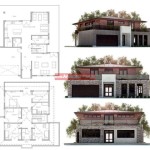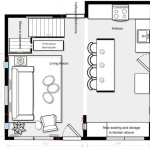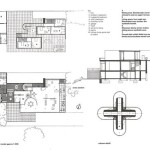Farmhouse Desk Building Plans: Free Options and Considerations
Farmhouse style desks are popular additions to home offices, offering a blend of rustic charm and practical functionality. The availability of free building plans online makes constructing a custom farmhouse desk an attainable project for DIY enthusiasts of varying skill levels. This article explores the world of free farmhouse desk building plans, discussing key factors to consider when choosing a plan and providing insights into the building process.
Finding free farmhouse desk plans online involves utilizing various resources. Dedicated woodworking websites often host plan libraries, categorized by project type and skill level. DIY and home improvement blogs frequently feature free plans alongside detailed tutorials. Searching using specific keywords like "free farmhouse desk plans," "DIY farmhouse desk," or "rustic desk plans" can yield numerous results. Social media platforms, particularly Pinterest, also serve as valuable sources of inspiration and links to free plans.
When selecting a free farmhouse desk plan, several factors warrant careful consideration. The skill level required should align with the builder's experience. Plans are often labeled as beginner, intermediate, or advanced, indicating the complexity of the construction techniques involved. The available tools and equipment should also be considered. Some plans require specialized tools that may necessitate additional investment. The dimensions of the finished desk are crucial, ensuring the desk fits comfortably within the intended space. Finally, the overall aesthetic of the desk should complement the existing décor of the room.
Farmhouse desk plans typically feature specific design elements that contribute to the characteristic rustic aesthetic. Common materials include reclaimed wood, which adds character and a sense of history to the piece. Metal accents, such as wrought iron pipe or black steel hardware, provide a contrasting industrial touch. X-frame supports or trestle legs are frequently incorporated, adding visual interest and structural stability. The desk surface is often finished with a clear sealant or a light stain to highlight the natural beauty of the wood grain.
Before beginning construction, gathering the necessary materials and tools is essential. A comprehensive materials list is typically included with the chosen plan. Common materials include dimensional lumber, plywood, screws, nails, wood glue, and finishing supplies. Necessary tools may include a saw (circular saw, miter saw, or hand saw), drill, measuring tape, level, sandpaper, and clamps. Having all materials and tools readily available streamlines the building process and prevents unnecessary delays.
The construction process generally involves several key steps. Begin by cutting the wood pieces according to the plan's specifications. Accurate measurements and precise cuts are crucial for ensuring the structural integrity of the desk. Next, assemble the desk frame, using screws and wood glue to secure the joints. Pay close attention to the plan's instructions for proper assembly techniques. Once the frame is complete, attach the desk top, ensuring it is flush with the frame and securely fastened. Finally, sand any rough edges and apply the desired finish, such as paint, stain, or sealant.
Customizing a farmhouse desk built from a free plan allows for personalization and adaptation to individual needs. The dimensions of the desk can be adjusted to fit specific spaces. Additional features, such as drawers, shelves, or keyboard trays, can be incorporated to enhance functionality. The choice of wood and finish can be modified to complement existing furniture or create a unique statement piece. Hardware selections, such as knobs and pulls, provide further opportunities for personalization.
Choosing the right wood for a farmhouse desk impacts both the aesthetic and durability of the finished piece. Reclaimed wood, with its unique imperfections and weathered patina, adds character and a sense of history. Pine is a cost-effective option that readily accepts stains and paints. Oak offers greater durability and a distinctive grain pattern. Maple provides a smooth, uniform surface that is ideal for painting. The wood selection should align with the desired aesthetic and the intended use of the desk.
Finishing a farmhouse desk protects the wood and enhances its natural beauty. A clear sealant provides a durable, water-resistant finish that showcases the wood grain. Stains add color and depth, while highlighting the natural variations in the wood. Paints offer a wider range of color options and can create a more uniform look. The choice of finish depends on the desired aesthetic and the level of protection required.
Maintaining a farmhouse desk ensures its longevity and preserves its appearance. Regular dusting with a soft cloth helps to prevent the buildup of dirt and grime. Avoid placing hot or wet items directly on the desk surface to prevent damage. Periodically applying a fresh coat of sealant or wax can help to protect the finish and maintain its luster. Addressing spills promptly prevents staining and water damage.

Free Plans Diy Farmhouse Desk

Farmhouse X Desk Ana White

Diy Farmhouse X Desk Free Plans Heatherstudios

Diy Farmhouse X Desk Free Plans Heatherstudios

Corner Desk Build Plans Farmhouse Digital

Farmhouse Office Desk Build Free Plans

Diy Farmhouse X Desk Heatherstudios

Diy Modern Farmhouse Desk Plans And Anika S Life

Rustic Farmhouse Table With Breadboard Ends A Free Diy Plan Edhart Me

Farmhouse Desks Free Woodworking Plan Com








